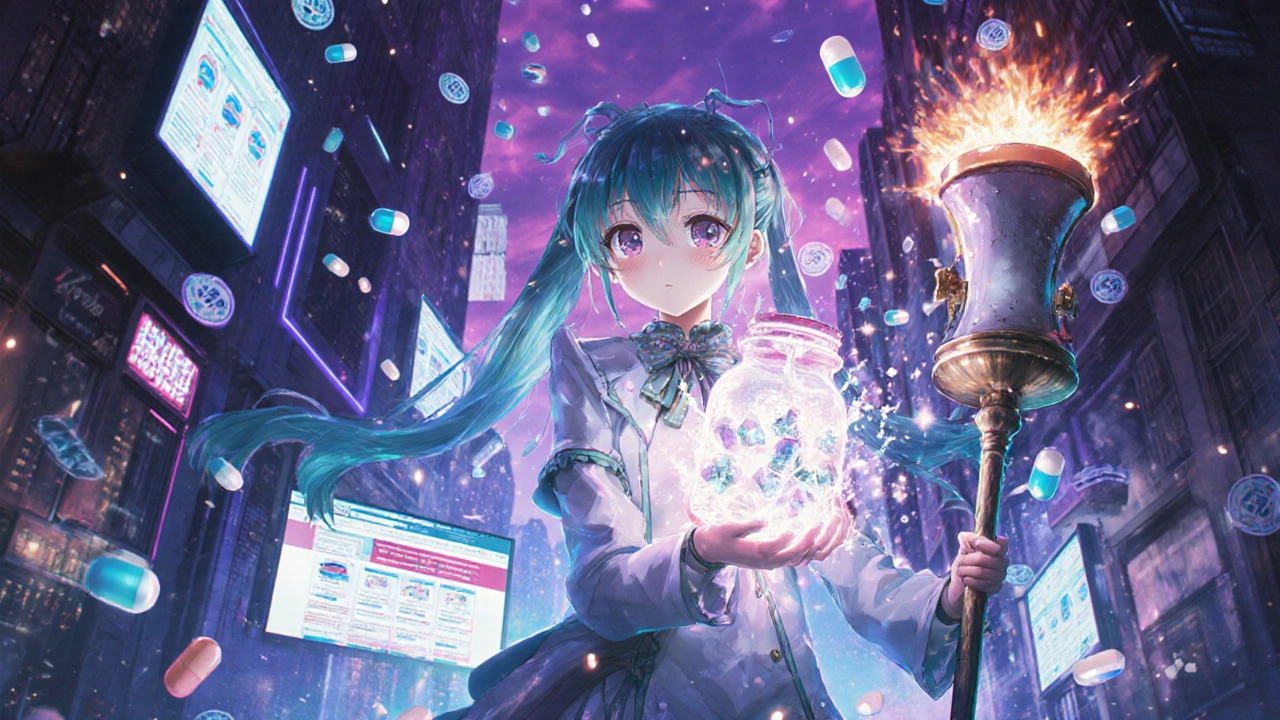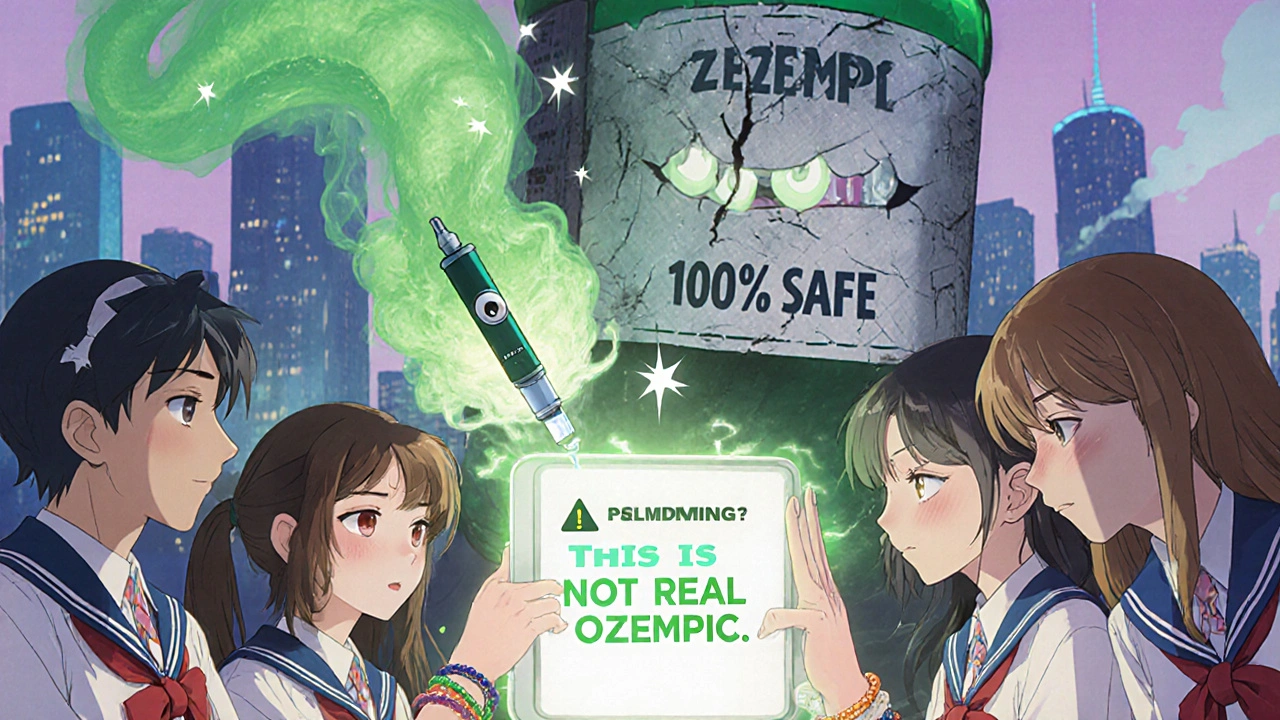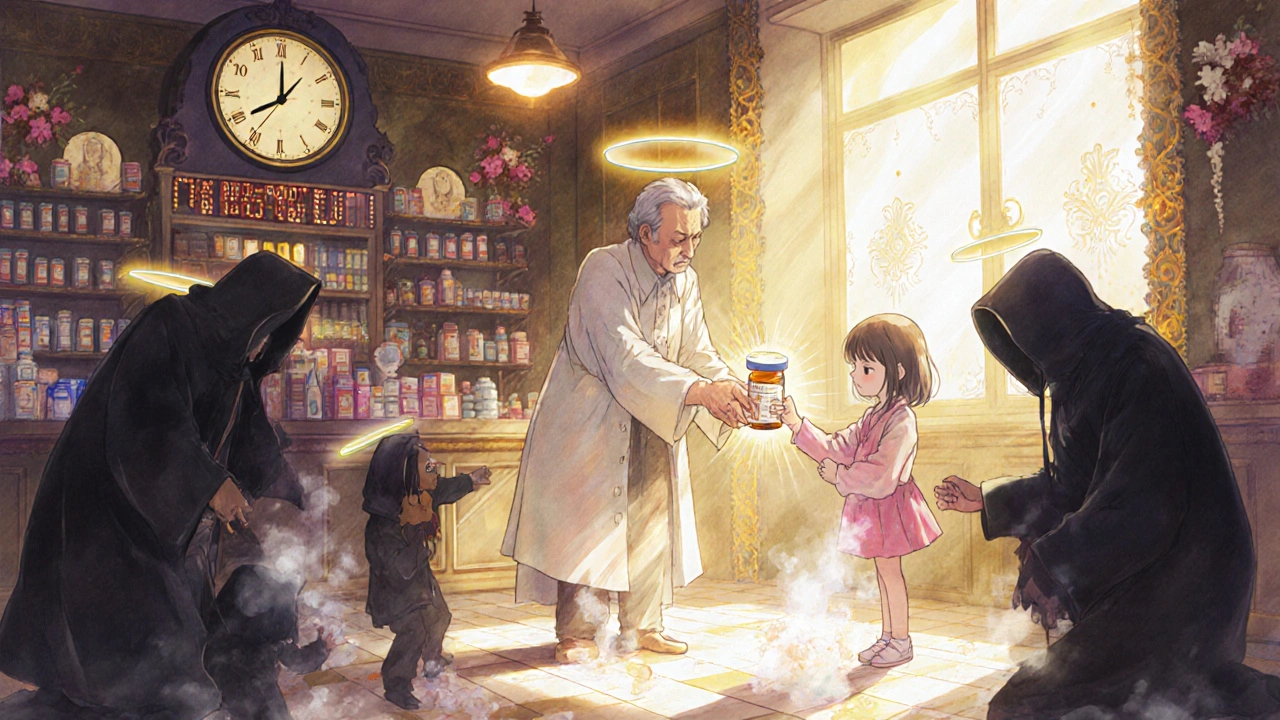 Nov, 19 2025
Nov, 19 2025
Every year, millions of people buy medicine online because it’s cheaper, faster, or more convenient. But what if the pill you just ordered isn’t what it claims to be? What if it contains fentanyl instead of painkillers, or chalk instead of insulin? This isn’t a horror story-it’s happening right now, and it’s more common than you think.
96% of Online Pharmacies Are Illegal
You might think you’re shopping at a legitimate site when you see a professional-looking website with product photos, customer reviews, and a secure checkout. But here’s the truth: 96% of online pharmacies operating worldwide are illegal. That’s not a guess-it’s from the U.S. Trade Representative’s 2024 report. These sites don’t require prescriptions. They don’t have licensed pharmacists. They don’t store medicines at the right temperature. And worst of all, they’re selling drugs that could kill you.The numbers are staggering. In 2025, Interpol’s Operation Pangea XVI shut down 13,000 websites and arrested 769 people across 90 countries. They seized over 50 million fake pills. That’s more than the entire population of Australia. And yet, 20 new illegal pharmacy sites pop up every single day.
What’s in These Fake Pills?
Counterfeit medicines aren’t just weak or ineffective-they’re deadly. The U.S. Drug Enforcement Administration seized over 60 million fake pills in 2024 alone. Most of them looked like oxycodone or Xanax, but they contained fentanyl-up to 50 times stronger than heroin. One pill can kill. And people don’t know they’re taking it.It’s not just painkillers. Fake Ozempic (semaglutide) has been found across the U.S. and Europe. People buy it for weight loss, thinking they’re getting a miracle drug. Instead, they’re getting a mix of unknown chemicals, some of which can cause liver damage, severe nausea, or even blindness. In June 2025, the FDA warned about counterfeit alli (orlistat) capsules sold online. The real product helps reduce fat absorption. The fake version? It had no active ingredient at all. Users lost money-and gained nothing.
Even Botox isn’t safe. In 2024, counterfeit Botox was found in multiple states. Patients reported facial paralysis, drooping eyelids, and difficulty swallowing. Why? Because the fake product didn’t contain botulinum toxin-it contained saline, bacteria, or worse. One woman in California needed emergency surgery after a fake Botox injection caused an infection that spread to her brain.
How Do These Fake Drugs Get Sold?
Criminal networks don’t operate out of basements anymore. They run full-scale e-commerce operations. They hire web designers. They pay for Google Ads. They create fake reviews. They even use the same logos and packaging as real companies. You can’t tell the difference by looking.These sites often claim to be based in the U.S., Canada, or the U.K. But their servers are in China, India, or Eastern Europe. They ship packages through international mail, hiding them in plain sight. The U.S. Department of Justice indicted 18 people in September 2024 for running a network that shipped millions of fake pills across 40 states. Many of those pills were labeled as “prescription-only” but were sold without any medical oversight.
And here’s the kicker: these criminals target the most popular drugs. Weight loss meds. Erectile dysfunction pills. Diabetes treatments. Cancer drugs. Why? Because they’re expensive, in high demand, and people are desperate. A real Ozempic pen costs $1,000. A fake one? $15. People think they’re saving money. They’re risking their lives.

Legitimate vs. Illegal Pharmacies: The Real Difference
There’s a world of difference between a real online pharmacy and a fake one. Here’s how to spot the difference:- Real pharmacy: Requires a valid prescription from a licensed doctor. You can’t buy prescription drugs without one.
- Fake pharmacy: Sells any drug without a prescription. “No doctor visit needed!” is a red flag.
- Real pharmacy: Has a licensed pharmacist on staff you can call or chat with.
- Fake pharmacy: No phone number. No physical address. Or the address is a PO box or a warehouse in another country.
- Real pharmacy: Is verified by the National Association of Boards of Pharmacy (VIPPS seal).
- Fake pharmacy: No verification seals. Or they make up their own fake ones.
- Real pharmacy: Ships medicines in sealed, tamper-proof packaging with clear labeling.
- Fake pharmacy: Packages look cheap. Labels have typos. Pills are oddly shaped or colored.
Only about 5% of online pharmacies meet the VIPPS standards. That means if you’re buying medicine online and you didn’t check for that seal, you’re almost certainly buying something dangerous.
Why People Fall for the Scam
It’s not about being gullible. It’s about being desperate.Many people can’t afford their prescriptions. Others live in areas with poor healthcare access. Some are embarrassed to talk to their doctor about weight loss or erectile dysfunction. Fake pharmacies prey on that shame and financial stress. They promise quick fixes, no appointments, and privacy.
But here’s what they don’t tell you: if you take a fake drug, you’re not just wasting money. You’re putting your body at risk. A counterfeit antibiotic might not kill your infection-it might make it worse. A fake diabetes pill might keep your blood sugar dangerously high. A fake cancer drug might give you false hope while your tumor grows unchecked.
And if you get sick? Good luck proving it was the medicine. Most counterfeiters vanish. The pills are gone. The website is down. And you’re left with a hospital bill and a story no one believes.
What to Do If You Suspect a Fake
If you bought medicine online and it didn’t work-or if you feel sick after taking it-act fast.- Stop taking it. Even if you think it’s just a bad batch, don’t risk another dose.
- Save the packaging. Take photos of the pills, the box, the label, and the website URL.
- Report it. Contact the FDA’s MedWatch program at 1-800-FDA-1088 or email [email protected]. They track these cases to shut down networks.
- Call your doctor. Tell them exactly what you took. Even if you’re not sure it was fake, they need to know.
You’re not just protecting yourself-you’re helping authorities take down these criminal operations. Every report matters.

How to Buy Medicine Online Safely
You don’t have to avoid online pharmacies entirely. You just have to be smart.- Only use pharmacies with the VIPPS seal (verified by the National Association of Boards of Pharmacy).
- Check the website’s physical address. Look it up on Google Maps. If it’s a warehouse or a residential house, walk away.
- Call the pharmacy. A real one will have a live person who can answer questions about your medication.
- Never buy without a prescription. If a site offers to “prescribe” you online after a 2-minute quiz, that’s not a pharmacy-it’s a scam.
- Compare prices. If it’s 80% cheaper than your local pharmacy, it’s fake.
- Look for the pharmacy’s license number. In the U.S., it should be listed on the site. Verify it with your state’s board of pharmacy.
And if you’re unsure? Go to your local pharmacy. Talk to your pharmacist. They know what’s real and what’s not. They’ve seen the damage these fake drugs cause.
The Bigger Picture
This isn’t just about one bad website. It’s about a global system that’s broken. Criminals exploit weak laws, poor enforcement, and consumer desperation. The World Health Organization says countries spend $30.5 billion a year on fake medicines. That’s more than the GDP of many small nations.The U.S. and U.K. are hit hard because we have high drug prices and strong demand. But the problem is global. In low-income countries, 1 in 10 medicines is fake. In some regions, it’s 1 in 3.
Companies like Pfizer have stopped over 300 million fake doses from reaching patients since 2004. That’s impressive-but it’s also terrifying. It means 300 million people almost died because someone thought they were saving money.
Final Warning
Buying medicine online without verification isn’t a shortcut. It’s a gamble with your life. There’s no such thing as a “safe” fake drug. There’s no “mostly real” pill. If it’s not from a verified pharmacy, it’s not medicine-it’s a poison.Don’t trust the website. Don’t trust the price. Don’t trust the reviews. Trust the system. Trust your doctor. Trust your pharmacist.
Your health isn’t a bargain. It’s priceless.
How can I tell if an online pharmacy is real?
Look for the VIPPS seal from the National Association of Boards of Pharmacy. Real pharmacies require a valid prescription, have a licensed pharmacist available, display a physical U.S. address you can verify, and are not selling prescription drugs without a doctor’s order. If any of these are missing, it’s fake.
Are fake medicines only a problem in developing countries?
No. Fake medicines are a global problem. The U.S. is one of the biggest markets for counterfeit drugs. In 2024, nearly 38% of all seized counterfeit medicines were targeted at U.S. companies. Fentanyl-laced pills are flooding American communities. Fake Ozempic and Botox are being sold to consumers in the UK, Canada, and Australia.
Can counterfeit drugs cause death?
Yes, and they already have. The DEA seized over 60 million fake pills containing fentanyl in 2024. Many of those pills were sold as oxycodone or Xanax. People took them thinking they were safe, but fentanyl is 50 times stronger than heroin. One pill can stop your breathing. Hundreds of deaths each year are directly linked to counterfeit drugs.
What should I do if I took a fake medicine?
Stop taking it immediately. Save the packaging and take photos. Call your doctor and report the incident to the FDA’s MedWatch program at 1-800-FDA-1088 or [email protected]. Even if you feel fine, some fake drugs cause delayed damage to your liver, kidneys, or heart. Get checked.
Why are fake Ozempic and Botox so common?
They’re expensive and in high demand. A real Ozempic pen costs over $1,000. A fake one sells for $15. Same with Botox-people want cosmetic results without the price tag. Criminals know this and exploit it. These drugs are also hard for consumers to verify without medical training, making them perfect targets for fraud.
Can I report a fake pharmacy anonymously?
Yes. The FDA’s MedWatch program accepts anonymous reports. You don’t need to give your name to help shut down these operations. Even just sending a photo of the website or packaging can help authorities track down criminal networks.
Is it safe to buy over-the-counter drugs online?
It’s risky. Even OTC drugs like alli (orlistat) or pain relievers have been counterfeited. Fake versions may contain toxic fillers, no active ingredient, or dangerous contaminants. Always buy from reputable retailers like CVS, Walgreens, or Amazon (sold and shipped by them, not third parties). If the price seems too good to be true, it is.
Gerald Cheruiyot
November 20, 2025 AT 22:14Just bought a bottle of 'generic' Adderall last month from a site that looked legit. Took one. Felt like my heart was trying to escape my chest. Threw it out. Never again. This post? Needed. 🙏
Michael Fessler
November 22, 2025 AT 06:54As a pharmacist who's seen the aftermath of counterfeit meds, this is terrifyingly accurate. Fentanyl-laced counterfeit Xanax is the #1 cause of overdose in our ER now. And the packaging? Often indistinguishable from the real thing. Even the holograms are replicated. The only safe bet is VIPPS + prescription. Anything else is Russian roulette with your CNS.
Alyssa Torres
November 23, 2025 AT 20:13I had a friend who bought fake Ozempic because her insurance wouldn't cover it. She lost 15 pounds in two weeks - then started having seizures. Turns out the ‘semaglutide’ was just sugar and lithium carbonate. She’s lucky she’s alive. We need way more public awareness. This isn’t just about money - it’s about people thinking they’re doing the smart thing, and instead they’re signing a death warrant. I’m crying right now.
Aruna Urban Planner
November 24, 2025 AT 02:38In India, counterfeit insulin is rampant in rural areas. Families buy it from local chemists who claim it’s ‘imported.’ The vials look real, but the liquid is clear - no active ingredient. Diabetics die slowly, quietly. No one reports it because they don’t know how. The system fails them at every level - regulation, education, access. This isn’t just a Western problem. It’s a global failure of equity.
Nicole Ziegler
November 24, 2025 AT 21:57my cousin took fake viagra and ended up in the hospital with a stroke. he was 32. just… don’t.
Bharat Alasandi
November 25, 2025 AT 10:17bro i used to buy fake Botox off Instagram. thought i was saving $800. ended up with a droopy eyelid for 6 months. now i just go to the med spa down the street and pay full price. worth every penny. also, if a site has 10k reviews and all say 'life changing' - that's a red flag. real people don't talk like that.
Kristi Bennardo
November 26, 2025 AT 22:50This is an absolute disgrace. The FDA is a toothless bureaucracy. The DEA is overwhelmed. The pharmaceutical industry is complicit by pricing life-saving drugs out of reach. And consumers? They're not stupid - they're desperate. This isn't about personal responsibility. It's about systemic corruption. Until we address the root cause - predatory drug pricing - this will continue. And someone will keep dying. Every. Single. Day.
Shiv Karan Singh
November 28, 2025 AT 11:31Lmao. You're all acting like this is new. Fake meds have been around since the 1800s. The real problem? People think they're entitled to cheap miracles. You want Ozempic for $15? Then accept the risk. Don't cry when you get poisoned. Also, VIPPS seal? That's just another corporate logo. I've seen real pharmacies sell expired meds too. Trust no one. Buy nothing online. End of story.